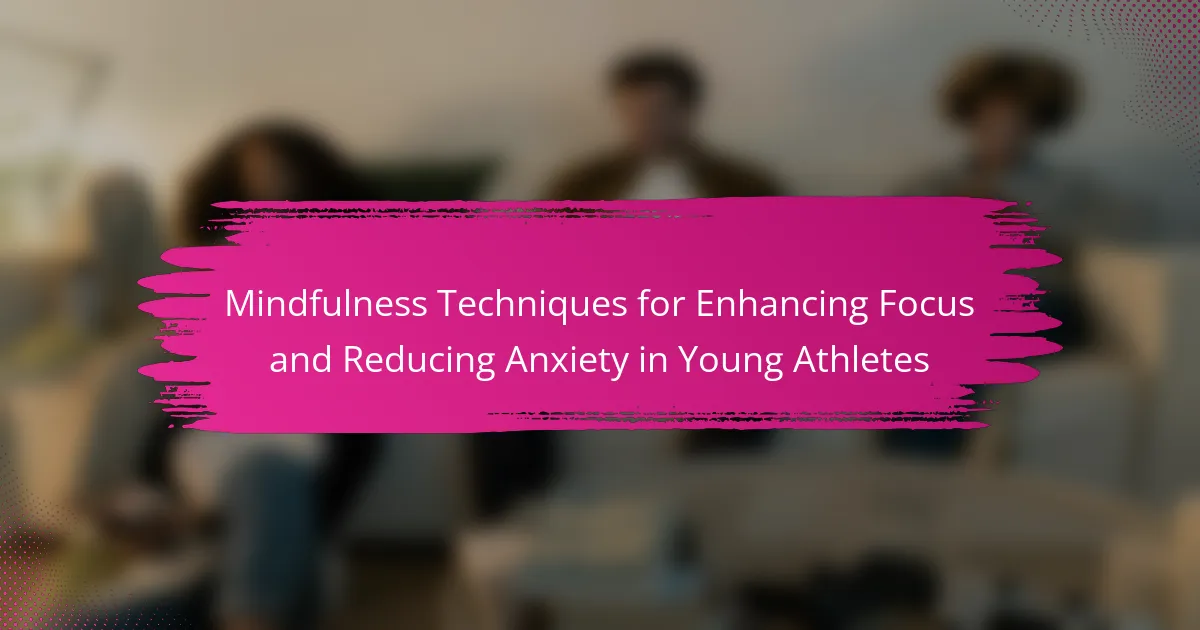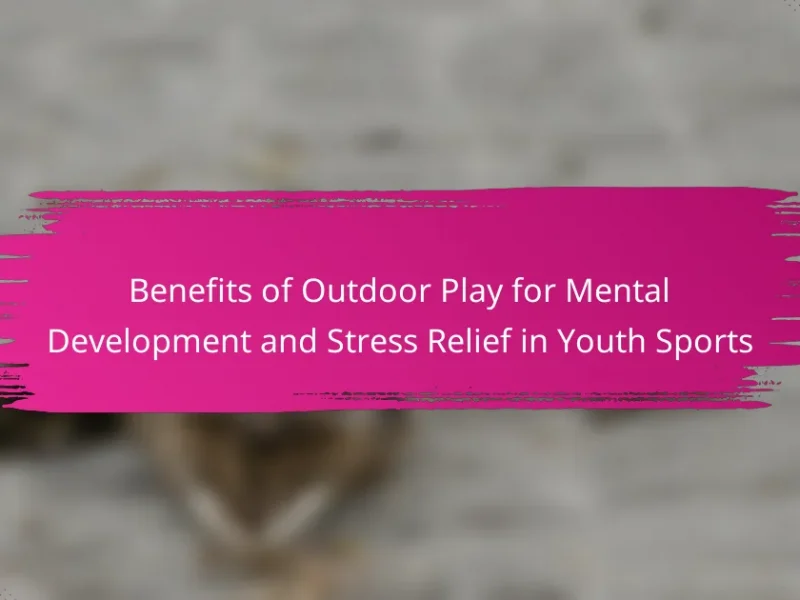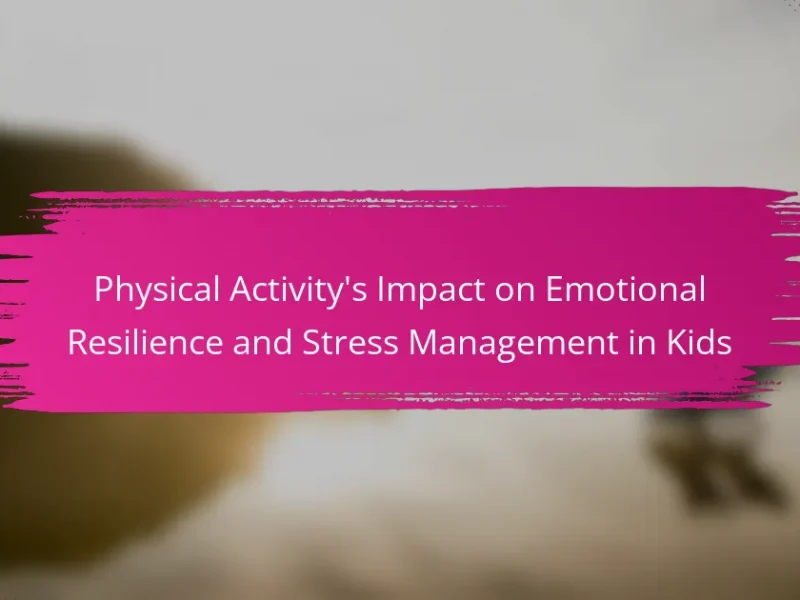Mindfulness techniques can significantly improve focus and reduce anxiety in young athletes. This article explores effective methods such as deep breathing, visualization, body scanning, and mindful movement. It addresses age-specific adaptations, common challenges, and the importance of consistent practice. By implementing these strategies, young athletes can enhance their mental resilience and performance.
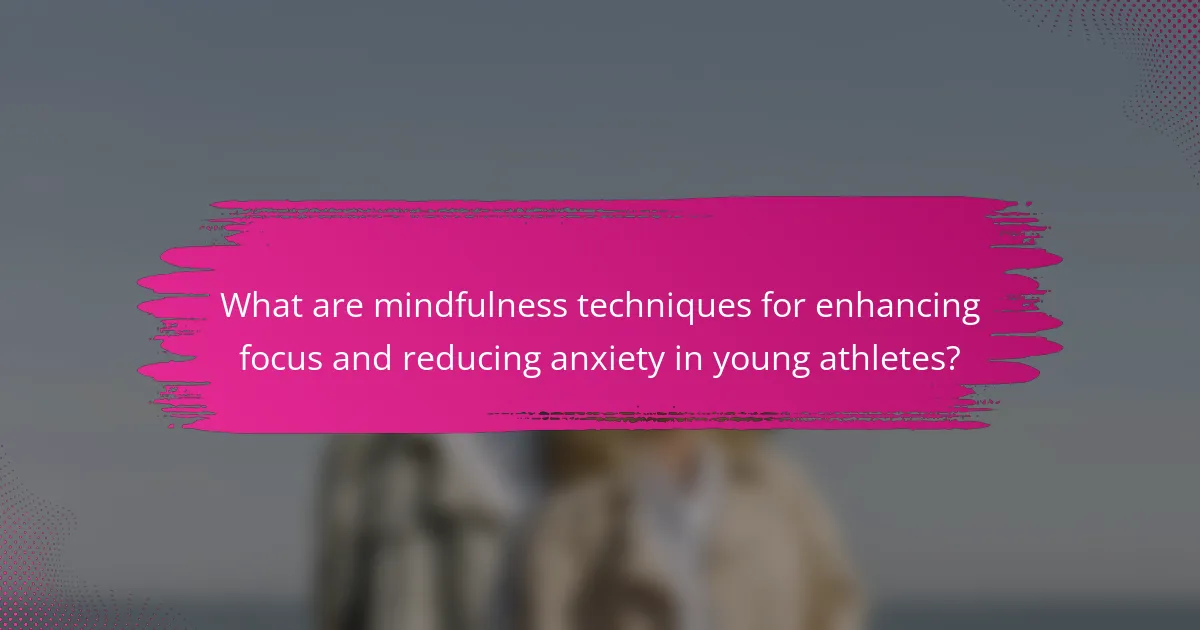
What are mindfulness techniques for enhancing focus and reducing anxiety in young athletes?
Mindfulness techniques can significantly enhance focus and reduce anxiety in young athletes. Techniques include deep breathing, visualization, body scanning, and mindful movement.
Deep breathing helps regulate emotions and promotes calmness. Visualization allows athletes to mentally rehearse performances, enhancing concentration. Body scanning increases awareness of physical sensations, helping to identify tension. Mindful movement, such as yoga, improves body awareness and focus.
Implementing these techniques regularly can lead to improved performance and well-being in young athletes.
How do mindfulness techniques improve concentration?
Mindfulness techniques significantly enhance concentration by promoting mental clarity and reducing anxiety. These practices help young athletes focus on the present moment, improving their attention span during training and competition. Techniques such as deep breathing and visualization can sharpen focus, allowing athletes to perform better under pressure. Research indicates that regular mindfulness practice can lead to a 25% increase in attention-related tasks, demonstrating its effectiveness in enhancing concentration.
What role does mindfulness play in anxiety reduction?
Mindfulness significantly reduces anxiety by promoting present-moment awareness. Techniques such as deep breathing, body scans, and focused attention help young athletes manage stress. Research shows that mindfulness practice can lower cortisol levels, enhancing emotional regulation and focus during competition. Regular engagement in mindfulness exercises fosters resilience, making athletes better equipped to handle performance pressure.

What are the universal attributes of mindfulness techniques?
Mindfulness techniques universally enhance focus and reduce anxiety through awareness, breathing exercises, and present-moment engagement. These attributes foster emotional regulation, improve concentration, and promote relaxation. Techniques like body scans and mindful movement uniquely cater to young athletes, addressing their specific stressors and performance pressures. As a result, practitioners often experience improved mental clarity and resilience.
How can breathing exercises enhance mental clarity?
Breathing exercises can significantly enhance mental clarity by promoting relaxation and focus. These techniques help young athletes manage anxiety and improve concentration during performance. Regular practice can lead to improved cognitive function, allowing for better decision-making and quicker reactions in high-pressure situations. Studies suggest that deep breathing increases oxygen flow to the brain, enhancing overall mental acuity.
What is the impact of visualization on athletic performance?
Visualization significantly enhances athletic performance by improving focus and reducing anxiety. Athletes who practice visualization techniques often experience increased confidence and better execution of skills during competition. Research indicates that mental imagery can activate the same neural pathways as physical practice, leading to improved muscle memory and overall performance. Furthermore, athletes using visualization report lower stress levels, which contributes to a more positive mindset during high-pressure situations.

What unique attributes set mindfulness techniques apart for young athletes?
Mindfulness techniques uniquely enhance focus and reduce anxiety in young athletes through personalized practices, adaptability, and performance integration. Techniques like visualization and breath control cater to individual needs, fostering mental resilience. Additionally, their application in training settings creates a seamless connection between practice and competition, promoting consistency. These attributes contribute to improved emotional regulation and concentration, setting mindfulness apart as a vital tool for young athletes.
How can journaling promote self-reflection and focus?
Journaling enhances self-reflection and focus by providing a structured outlet for thoughts and emotions. It encourages young athletes to process experiences, identify patterns, and set clear goals. This practice fosters mindfulness, reducing anxiety and improving concentration during training and competition. Journaling can also reveal unique insights about personal performance and mental states, which are essential for growth.
What are the benefits of mindful movement practices?
Mindful movement practices enhance focus and reduce anxiety in young athletes by promoting self-awareness and emotional regulation. These techniques improve concentration, leading to better performance. They also foster resilience and stress management, crucial for competitive environments. Regular practice can enhance physical coordination and mental clarity, contributing to overall well-being.

What rare attributes can enhance mindfulness effectiveness?
Incorporating rare attributes can significantly enhance mindfulness effectiveness for young athletes. Techniques such as nature immersion, which involves practicing mindfulness in natural settings, can improve focus and reduce anxiety. Additionally, integrating biofeedback tools, which provide real-time physiological data, can help athletes better understand their stress responses and regulate their emotions. Another rare attribute is the use of guided imagery, where athletes visualize successful performances, fostering a positive mindset. These unique approaches can create a more impactful mindfulness practice tailored to the specific needs of young athletes.
How can personalized mindfulness plans cater to individual athlete needs?
Personalized mindfulness plans can effectively address individual athlete needs by tailoring techniques to enhance focus and reduce anxiety. These plans consider unique attributes such as the athlete’s sport, mental state, and performance goals. For example, a young gymnast may benefit from visualization techniques, while a soccer player might focus on breath control. By using specific mindfulness practices, athletes can cultivate resilience, improve concentration, and manage stress effectively. This individualized approach enhances overall performance and well-being in competitive environments.
What are the effects of group mindfulness sessions on team dynamics?
Group mindfulness sessions significantly enhance team dynamics by promoting communication, reducing anxiety, and fostering collaboration. These sessions create a supportive environment that encourages athletes to share experiences and build trust. Research indicates that participants in mindfulness practices report improved focus and emotional regulation, which translates to better teamwork. As a result, young athletes develop stronger interpersonal relationships and a more cohesive team spirit.
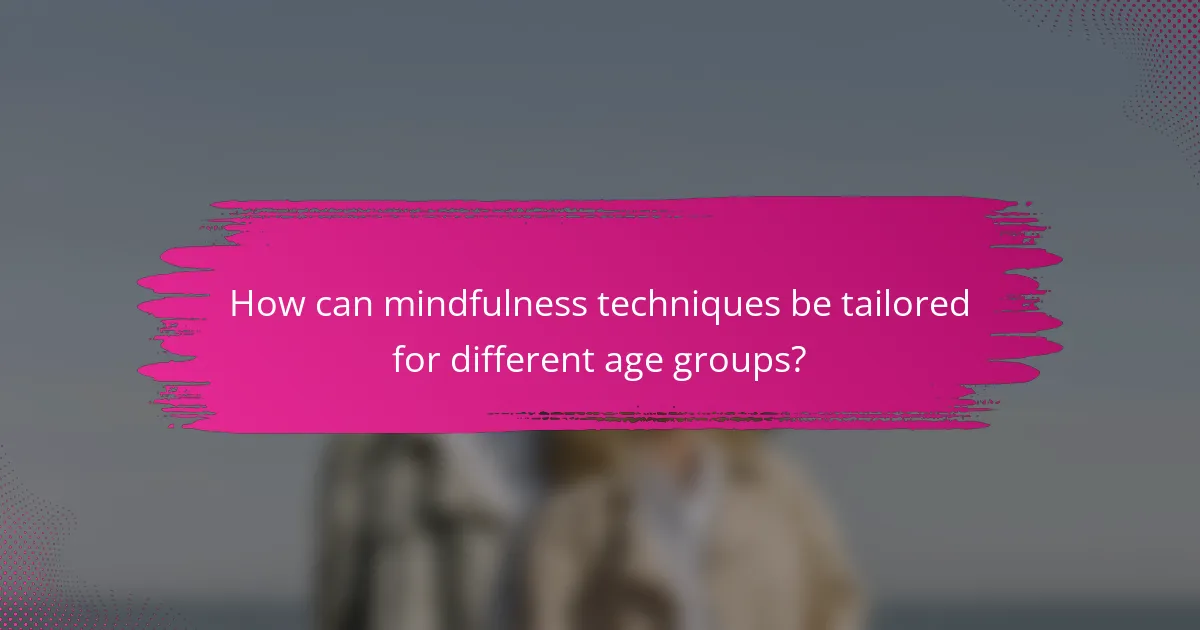
How can mindfulness techniques be tailored for different age groups?
Mindfulness techniques can be tailored for different age groups by considering their developmental stages and needs. Young athletes benefit from techniques that enhance focus and reduce anxiety, such as visualization and breathing exercises.
For children, engaging activities like mindful games can be effective, while adolescents may respond better to guided meditations that address performance pressure. Adults can utilize more structured practices, such as mindfulness-based stress reduction, to manage anxiety and improve focus during competitions.
Incorporating age-appropriate language and examples ensures that mindfulness techniques resonate with each group, fostering a supportive environment for mental well-being. This approach enhances the effectiveness of mindfulness practices across various age ranges.
What age-specific strategies are most effective for young athletes?
Mindfulness techniques significantly enhance focus and reduce anxiety in young athletes. Effective strategies include deep breathing exercises, visualization practices, and mindful movement activities like yoga. These techniques improve mental resilience, enabling athletes to perform under pressure. Regular practice fosters a unique ability to maintain concentration during competitions, leading to improved performance. Additionally, incorporating mindfulness into training routines can create a positive mindset, which is essential for long-term athletic development.
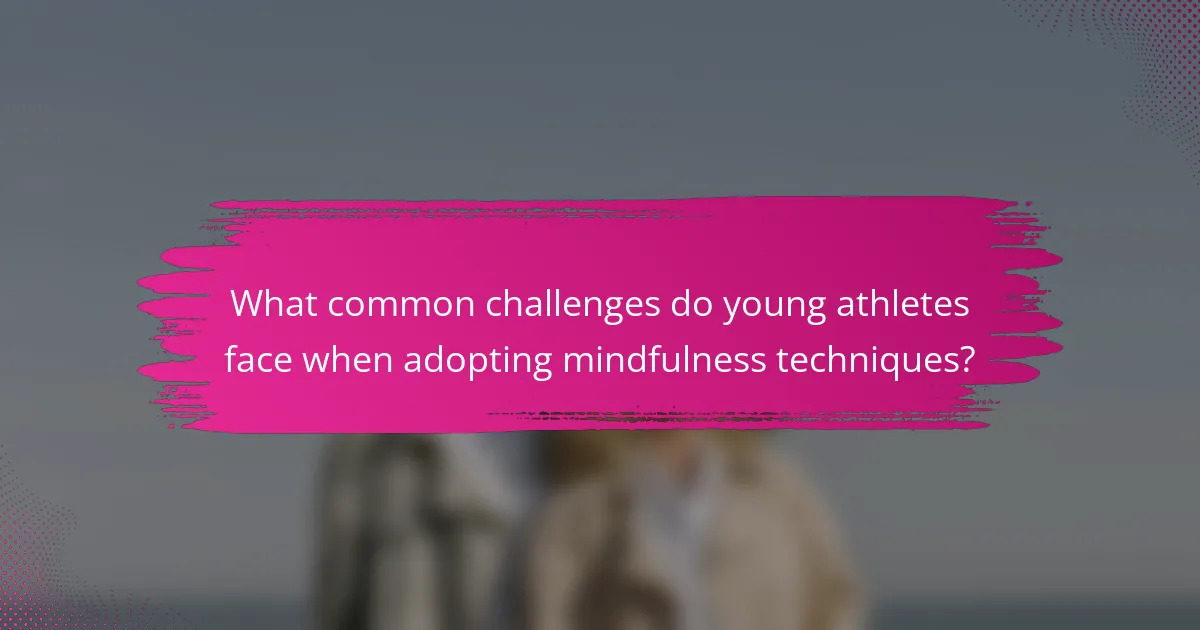
What common challenges do young athletes face when adopting mindfulness techniques?
Young athletes often encounter challenges such as distractions, lack of understanding, and difficulty in consistency when adopting mindfulness techniques. Distractions can stem from competitive environments, making it hard to focus. Many young athletes may not fully grasp mindfulness concepts, leading to ineffective practice. Additionally, maintaining consistent mindfulness routines can be tough due to busy schedules and external pressures. These factors can hinder the effectiveness of mindfulness in enhancing focus and reducing anxiety.
How can parents support their children in practicing mindfulness?
Parents can support their children in practicing mindfulness by incorporating simple techniques into daily routines. Encourage regular mindfulness exercises, such as breathing techniques and body scans, to enhance focus and reduce anxiety. Create a calm environment for practice, free from distractions. Engage in mindfulness activities together, fostering connection and shared experiences. Consistency is key; set aside specific times for mindfulness practice to build a habit.
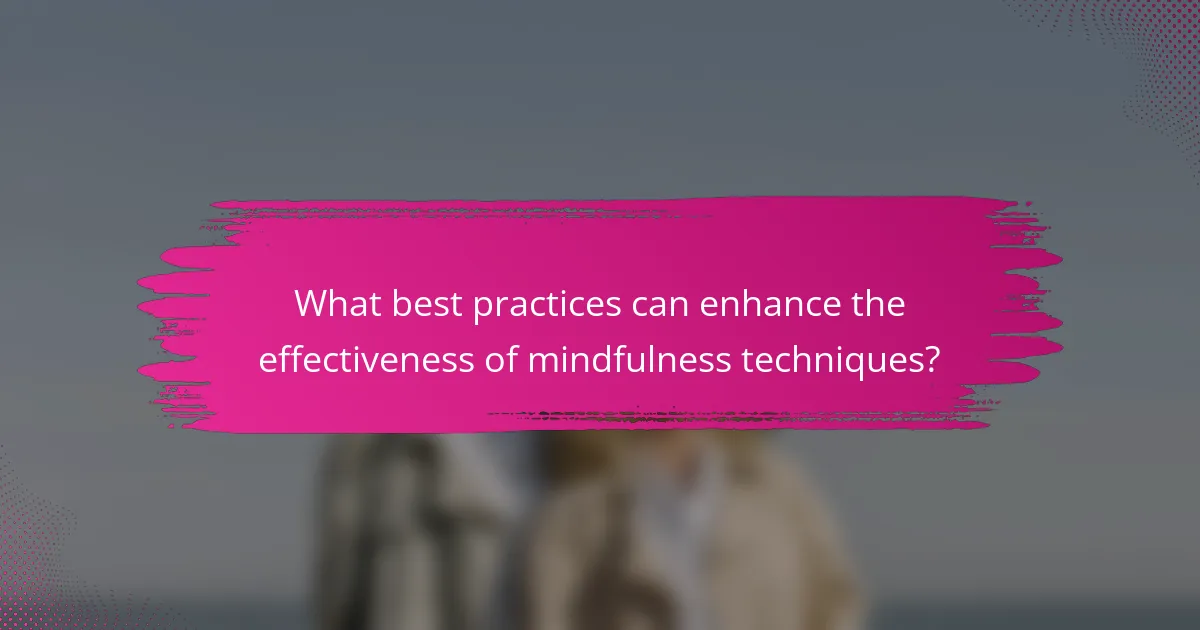
What best practices can enhance the effectiveness of mindfulness techniques?
To enhance the effectiveness of mindfulness techniques, young athletes should practice regularly, focus on breath awareness, and incorporate visualization. These methods improve concentration and reduce anxiety. Consistent practice can lead to better performance and mental resilience. For instance, setting aside specific times for mindfulness can create a routine that reinforces focus.
What common mistakes should be avoided when implementing mindfulness?
To successfully implement mindfulness, avoid these common mistakes. Neglecting consistency can hinder progress; regular practice is essential for benefits. Focusing solely on breathing can limit experiences; incorporate various techniques like body scans and mindful movement. Ignoring individual differences may lead to frustration; tailor practices to each athlete’s needs. Lastly, setting unrealistic expectations can cause disappointment; embrace mindfulness as a gradual journey.
How can young athletes track their mindfulness progress effectively?
Young athletes can track their mindfulness progress effectively by using journals, apps, and regular self-assessments. Journaling allows athletes to reflect on their thoughts and feelings, enhancing self-awareness. Mindfulness apps provide guided exercises and progress tracking features, making it easier to stay consistent. Regular self-assessments help identify areas of improvement and reinforce positive habits. Setting specific mindfulness goals can also provide clear benchmarks for progress.
What expert insights can guide the integration of mindfulness into training routines?
Incorporating mindfulness into training routines enhances focus and reduces anxiety in young athletes. Expert insights emphasize consistent practice, such as breathing exercises and visualization techniques. These methods help athletes manage stress and improve performance. Regularly integrating mindfulness sessions into training promotes mental resilience, fostering a positive mindset essential for athletic success.
